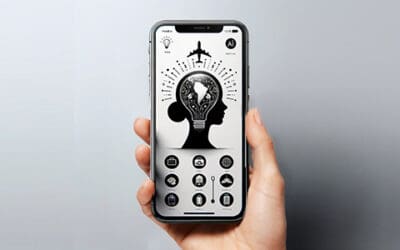
From Persona to Personal: The Potential of the Customer Experience.
The closest we’ve come to personalized communication is narrowing the perimeters of our potential audiences into life-choice buckets. We started with demographics and combined that with psychographics. Some brands, such as Claritas, attempt to create their own segmentation categories of audiences called “prizm clusters.” Today, many brands simply create personas for the audiences they want to engage. But, at the end of the day, most organizations still don’t know or have a relationship with the actual individual. At least not in a way that makes it cost-effective for marketing purposes.
Brands that excel at personalization will outsell the ones that don’t by 20% according to research from Gartner. Furthermore, Forrester predicts that by 2020, the customer experience will be more important than price when it comes to purchasing and retention habits. Consumer-brand relationships are about to change drastically. If your company can’t find a way to navigate these changing waters, you may be out of luck.
Go the extra mile
Let’s start with the offline version of the personalized experience. In my opinion, the best company implementing this from an operational standpoint today is Starbucks. This is because every order is customized to the individual, including asking for your name. And as simple, yet amazing, as this is, if you go often enough, the barista will begin to know what to make you before you finish ordering.
Knowing your customers name when they walk in the door or their regular coffee order before they are finished ordering is something every company should strive for. Providing the consumer a feeling of importance is something that cannot be replaced.
The Ritz-Carlton is another great example of a brand delivering individualized experiences. They’re dedicated to inspiring life’s most meaningful journeys and their “Gold Standards” approach focuses on how to better service customer engagement.
The Ritz-Carlton has empowered each employee to live up to their Gold Standards by allowing them to spend up to $2,000 per guest, per day to solve a problem or create an exceptional experience. To date, the company has catalogued more than 300,000 stories of exceptional guest experiences that were made possible by employees.
One of those examples is Joshie the giraffe. A young boy had left his favorite toy behind upon departing the hotel with his family. After his parents called the hotel to ask that it be mailed back, the staff went to work. Instead of simply returning the stuffed toy, they took photos of Joshie relaxing at the pool, enjoying the spa and hanging out with friends. The photos, along with a letter, accompanied Joshie in the mail back to the boy. The letter explained how much the stuffed animal loved the extra couple days of vacation along with details of his adventures. I can guarantee you those guests are Ritz-Carlton customers for life.
Take advantage of emerging technology
For brands, it will be critical to create these types of compelling and authentically personal experiences in order to retain the customers they have and to attract new ones. To accomplish that, brands will have to go far beyond the statistics currently being measured today. Key insights and an understanding of each individual’s specific desires, behaviors and motivations will be essential for brands to survive and thrive in this new world of expected relevancy.
A clear indicator of this are the analytics in open rates of push notifications. Last year, more than 140 million push notifications were sent to mobile devices according to Leanplum. Of those, 73 million were generic notifications. They had an average open rate of .09%. In contrast, 69 million behavior-based notifications were sent and their open rate was 8%. Clearly, the more personalized and relevant the communication, the greater the impact.
Great experiences are a function of operations. Given the technology of today and the adoption of mobile applications, the ability for brands to move beyond pushing simple notifications and coupons has arrived. The opportunity to change behavior and the experience of a specific consumer at large scale is now at the fingertips of anyone who wants it. And that is how organizations can take a simple sale and create a customer for life.
Proximity engagements are the new business paradigm. They can create a deeper kind of brand affinity by getting the right message to the right person at the right time and at exactly the right place. Which means the train is ready to leave the station, and you’d better be on it.
You may also be interested in
Most Mobile Apps Don’t Make Money. Here’s Why.
Most brands believe their mobile app is making them money, when in reality, it probably is not. After all, when customers use a brand’s mobile app to complete a transaction, it doesn’t necessarily mean the mobile app is responsible for the transaction. It’s the...
Leveraging Artificial Intelligence (AI) to Uncover Sales Opportunities
Businesses are constantly on the lookout for innovative ways to maximize their revenue. Two of the most powerful sales techniques are cross-selling and upselling. Both strategies involve offering additional products or services to a customer during the sales process,...
How Adding True 1:1 Personalized Content to Your Mobile Marketing Can Generate Immediate ROI for Your Business
Personalized automated mobile marketing is more accessible and affordable than most business owners realize. It’s not just for large corporations anymore. It’s available for businesses of all sizes. With LighthousePE, your business can deliver deeply...
Personal AI Travel Itineraries Can’t Fully Deliver on the Promise of Personalization
Generative AI creates travel itineraries based on what everybody else has done, not what you’d like to do. The travel and tourism industry is all about inspiring people to have meaningful, memorable experiences when visiting a destination. Destination...





